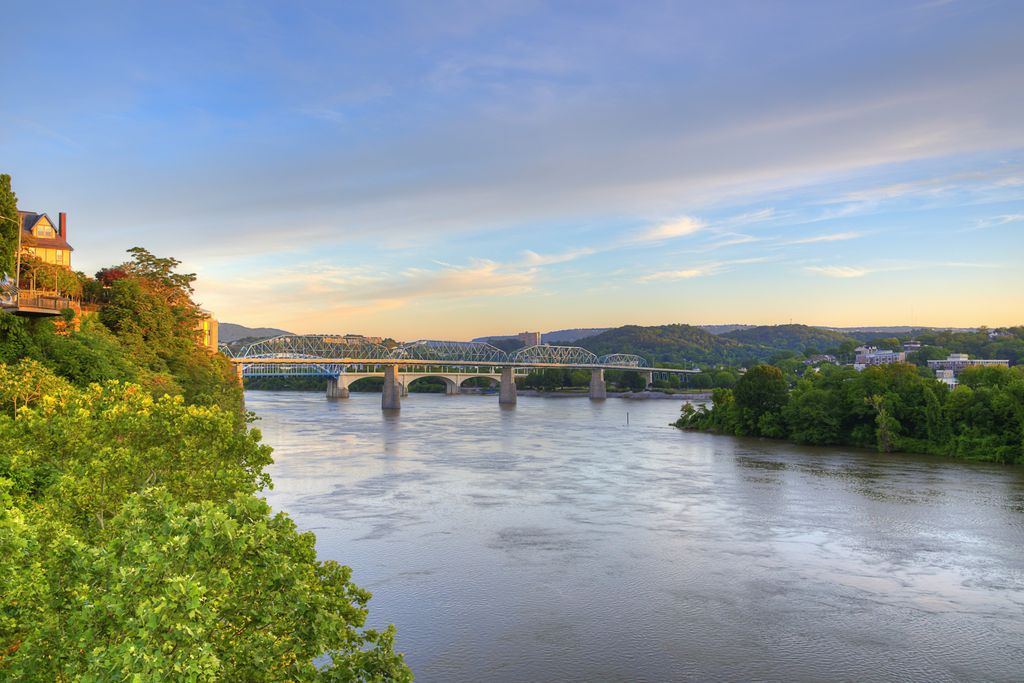
WWW.SMITHSONIANMAG.COM
Chattanooga Just Became North America's First National Park City. Here's What That Means
Chattanooga Just Became North America’s First National Park City. Here’s What That Means
The designation was awarded by a London-based charity that aims to make cities more like national parks: “greener, healthier and wilder”
Chattanooga was once one of the most polluted cities in the country. Now, it's North America's first National Park City.
larrybraunphotography.com via Getty Images
Chattanooga has been named North America’s first National Park City, a designation that acknowledges the city’s abundant green spaces and commitment to environmental stewardship.
The city in southeast Tennessee, home to roughly 190,000 residents, is now the third National Park City in the world, following behind London and Adelaide, Australia. The title comes from the National Park City Foundation, a London-based charity that envisions a better future by thinking of cities more like national parks.
The movement is not connected to the National Park Service, the federal agency that manages America’s national parks, monuments, historic sites and other protected lands.
“[National parks] are special places where we have a better relationship with nature, culture and heritage and can enjoy and develop ourselves,” according to the foundation. “Combining the long-term and large-scale vision of national parks with cities has the potential to shift our collective understanding of what and who a city is for.”
In Chattanooga, city leaders have used the initiative to encourage residents to “think about Chattanooga as a city in a park, rather than a city with some parks in it,” says Tim Kelly, the mayor of Chattanooga, in a video announcing the designation.
“The outdoors is our competitive advantage,” he adds. “It’s at the heart of our story of revitalization, and it’s at the core of our identity as Chattanoogans. We’ve always known how special Chattanooga’s connection to the outdoors is, and now it’s going to be recognized around the world.”
Chattanooga has been working toward the designation for nearly two years, per a statement from the city. In late 2023, officials collected more than 5,600 signatures of support and created a National Park City charter. Then, they filed an application describing how Chattanooga met the nonprofit’s criteria—such as being “a place, vision and community that aims to be greener, healthier and wilder.”
Last month, delegates from the foundation visited Chattanooga to experience it first-hand. They toured an urban farm, explored several parks and met with various community leaders, per NOOGAtoday’s Haley Bartlett.
The foundation’s experts were impressed by Chattanooga’s “culture of outdoor activity,” its “unrivaled access to nature,” its commitment to “inclusive and sustainable development” and its food and agriculture scene, among other factors.
“We saw first-hand the extraordinary breadth and depth of engagement with the Chattanooga National Park City vision informed by outstanding experts in design, ecology, culture and arts,” says Alison Barnes, a trustee of the foundation, in a statement. “National Park City status introduces a new chapter for a city with a long history of revitalization and renewal through connecting its unique landscape and the history of its people.”
Chattanooga has come a long way since 1969, when the federal government declared it the worst city in the nation for particulate air pollution.
Hazy skies were the norm back then, as factories and railroads spewed unregulated emissions into the air, according to the Chattanooga/Hamilton County Air Pollution Control Bureau. Air pollution was so bad that residents sometimes had to drive with their headlights on in the middle of the day. But the pollution was more than just an eyesore. It was also causing the city’s residents to become sick—and sometimes die—from diseases like tuberculosis.
Eventually, voters approved aggressive new rules to reduce emissions. By 1989, Chattanooga’s air quality had improved so much that it met all federal health standards.
Today, it’s a vibrant, outdoorsy city with more than 100 parks and more than 35 miles of trails—plus many more within a short drive. The once-neglected riverfront downtown has been revitalized, and Chattanooga has experienced steady population growth in recent years.
What does the National Park City designation mean for the city’s future? That remains to be seen. But officials hope it will help guide policy decisions and “help city government and community partners prioritize connecting more people to the outdoors that have long defined our identity,” according to a statement from the Chattanooga Area Chamber. It will also encourage citizens and leaders to embrace “all aspects of outdoor life,” from forests and lakes to native plants, according to the chamber.
Mark McKnight, who serves as the president and CEO of Chattanooga’s Reflection Riding Arboretum and Nature Center, hopes that the new status will “yield some really cool stuff that we can’t even imagine today.”
“Hopefully, we’re having this conversation in ten years, and it’s like, ‘Oh, wow, we never knew we would get to there,’” he tells the Chattanooga Times Free Press’ Sam Still.
Get the latest stories in your inbox every weekday.
0 Commentaires
0 Parts
33 Vue


